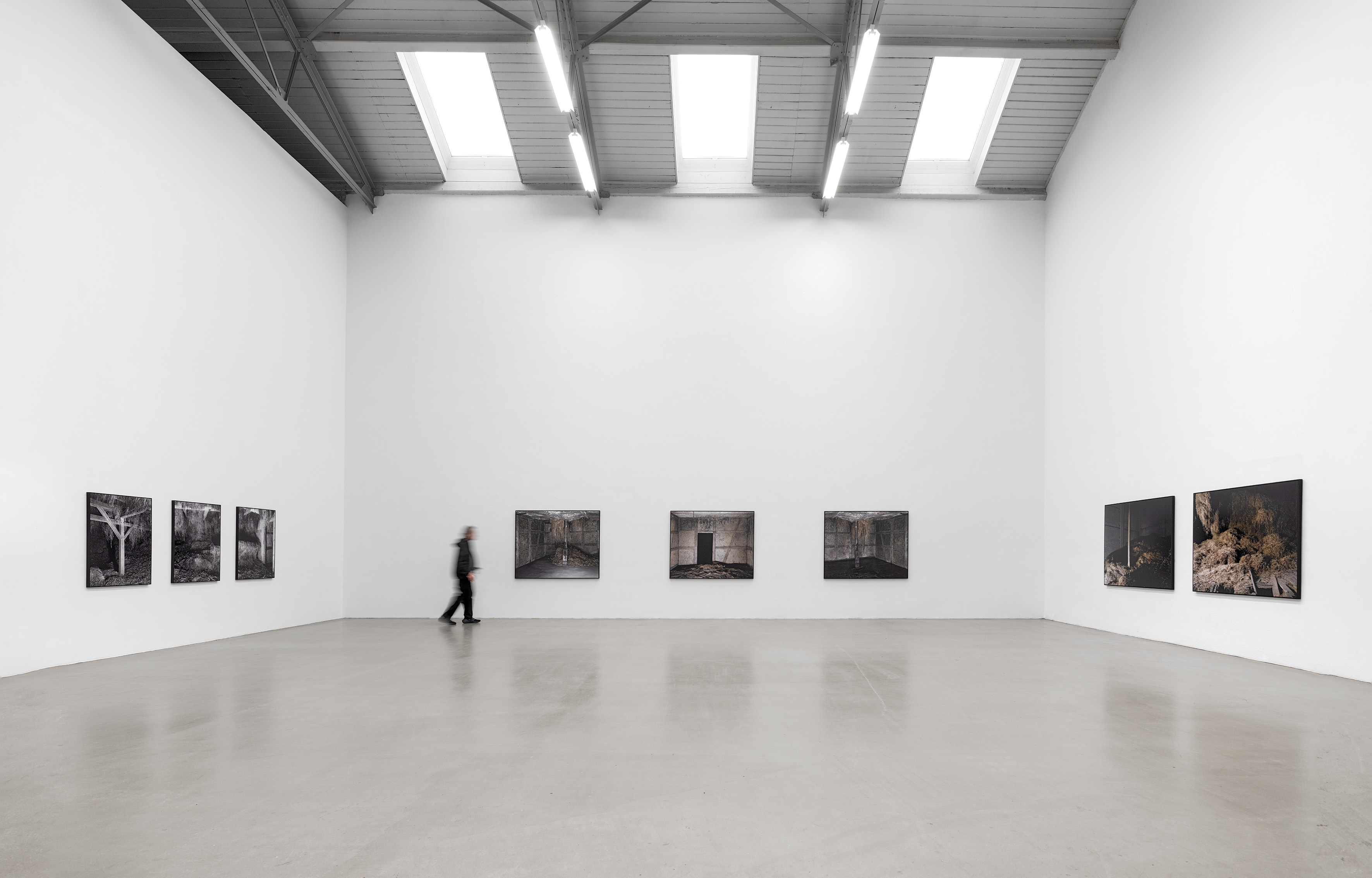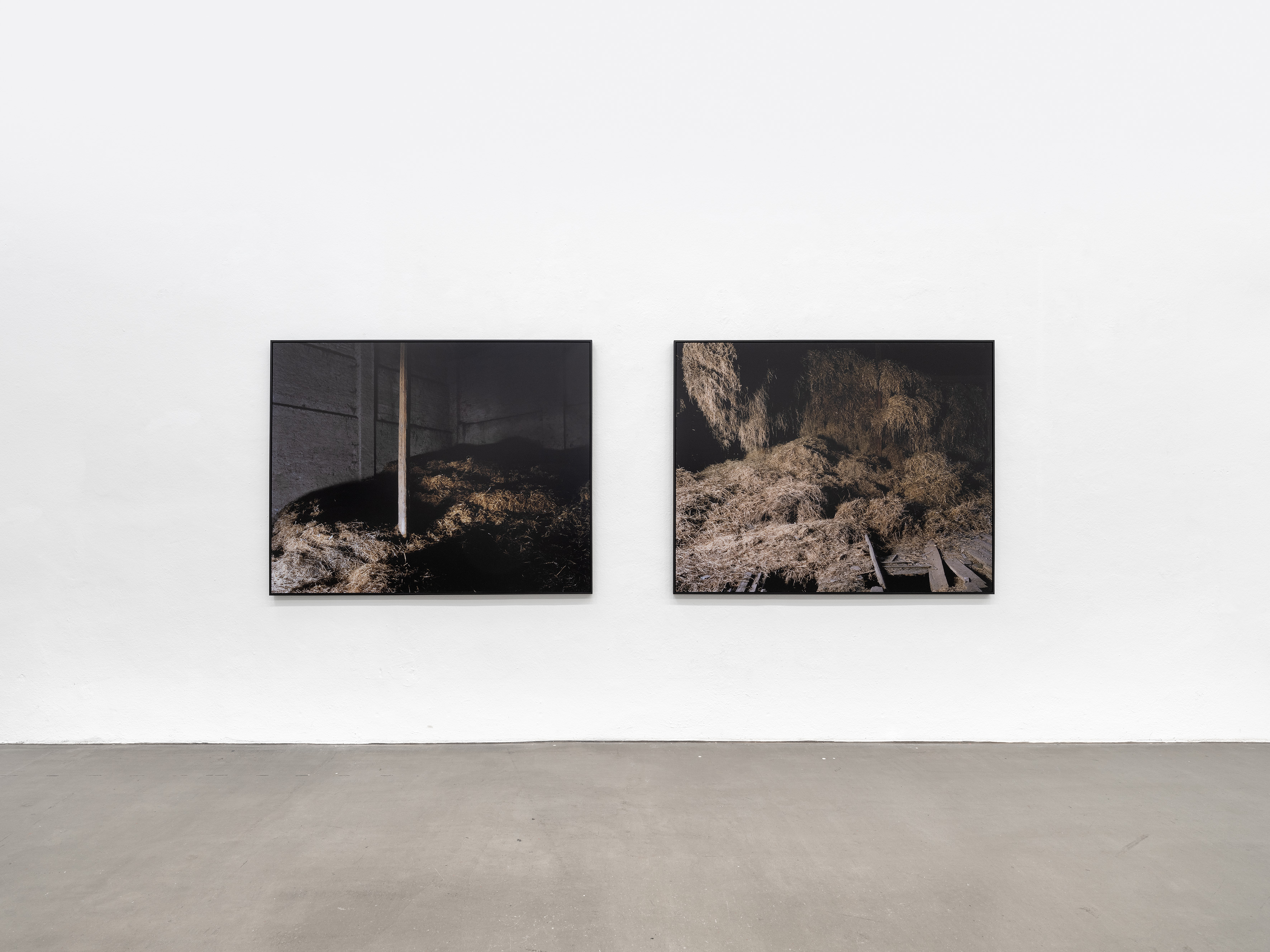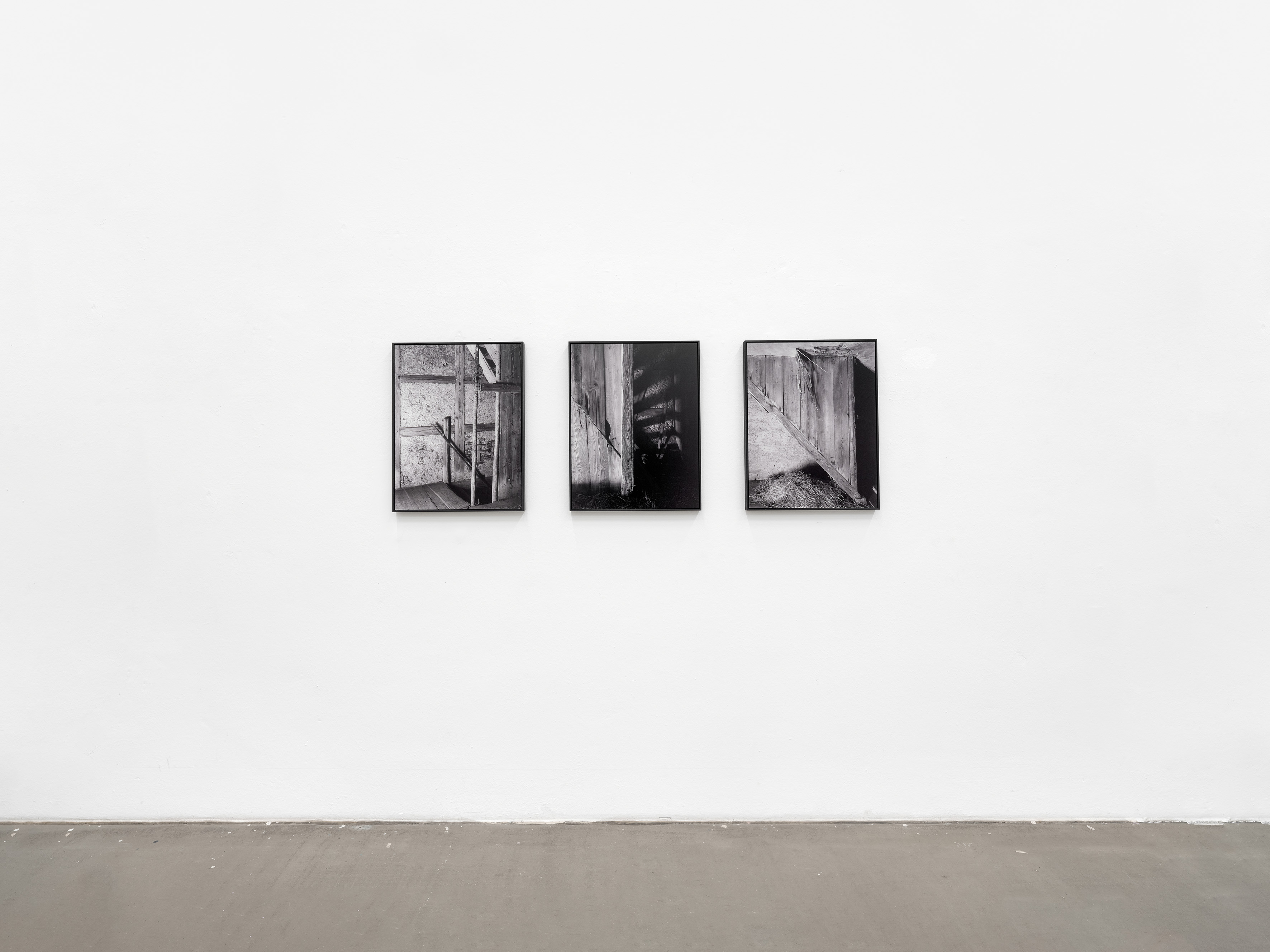Ricarda Roggan
BODEN
Galerie EIGEN + ART leipzig
13 January – 2 March 2024
Opening: Saturday, 13 January, 11am – 7pm
Film & Edit: TABLEAU Films (Matthias Maercks)
German with English subtitles

I stand in a meadow and look around. I’m glad that there are general terms, because without the term meadow, I couldn’t say what surrounds me: the individual stalks and leaves are innumerable and diverse, so that any expectation to derive an order from their sum would surely fail. Thus, the term meadow is an indefinite abstraction into whose stay I withdraw.
The meadow grows, is mown, and continues growing. What is mown dries out, first outdoors, then in the shed, in an accommodation specially erected for it. It becomes hay. In its accommodation, the straw is protected from moisture, and the careful storage conserves the effective powers of the grasses, preserves them in a new form, and provides the animals with nutrition or furnishes their living space. But when I look at hay, I am overcome with a helplessness similar to that on the meadow. It may be a pleasant feeling to bed down on straw, but as soon as I peer into a mass of straw, I get dizzy. It’s not a sight that pleases me. Why is that?
Ricard Roggan’s BODEN pictures are embedded in a dramaturgy. Initially, they vouchsafe the viewer’s gaze the certainty of an accommodation, a site of preservation, the barn. A simple, solid construction made of wood and masonry. If one follows the intended sequence, the black-and-white pictures lead steadily upward. When one arrives at the hayloft, the life of the hay begins. It expands, burgeons from everywhere, from above, from the corners. Here is obviously its living space. And I grow uncertain whether I like this glimpse of the indeterminateness of this material.
But then there is a first colored picture, and for the first time a deeper space can also be seen, with side walls and a wall opposite, in which there is a doorway. But it blocks the gaze from looking further. In the dark, things can only be surmised. These spaces are emptied; only a little straw is scattered in them. But it breaks through the roof; with mechanical force, a contraption tries to shore up against this untamedness. In another picture, the hayloft is blank, as if the room now had a purpose to serve other than for storage. This may be the first place where picture and space associate. It becomes obvious that I have been moving in pictorial spaces from the beginning. I remember that the first picture also showed a door opening onto blackness, and suddenly I’m aware that I had to walk through this door to see the interior in the other pictures. The photographs show me what hides itself. Or what shows itself only in them.

The photographic images fixate this site. Like an analysis, they demonstrate, first, the balance of the life of nature and the life of the animals bred by humans. In strictly arranged photos that correspond with the geometry of the spaces and above all with the geometry incorporated in photographic technique, these pictures seem like a systematic inventory of the task of this site. But then comes the moment when the gaze tips over. Already in the early picture showing stairs leading upward, uncertainly slips in whether this might also be a stairway downward and that the assumed movement from below to above might equally be from above to below. So that, arriving below, a floor also extends, but one that has no more function. Groundless grounds.
The colored pictures in particular seem as if they downright invent another site or perhaps a non-site, a site beyond our familiar experience of space. The next-to-last picture shows a space with unclear dimensions, like an underground vault or carcere; the hayloft is filled with rising straw. The light employed for the photo presses the mass of straw almost into an expressionistic corporeality; the space does not want to be entered. The last picture, in turn, is in the middle of the straw. The material filling the picture overwhelms the view and leads to a flattening of the space, promoting the violence of a dis-order. Now one is somewhere else.
And the picture with the car? Packed up, it also stands in a space lacking dimensions. A strange artifact from a past age. It has no function anymore, just as little as the straw; there are no more animals. A life afterward.
Ricarda Roggan’s BODEN pictures take us away into an aesthetic of dizziness, not the dizziness of freedom, as Kierkegaard dreamed it, but the dizziness that perceives the groundlessness of the present.
Marc Ries
Translated by Mitch Cohen
